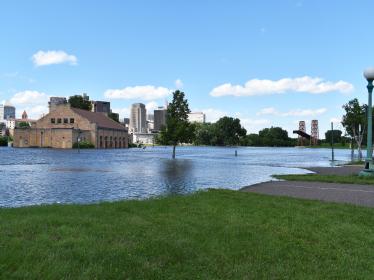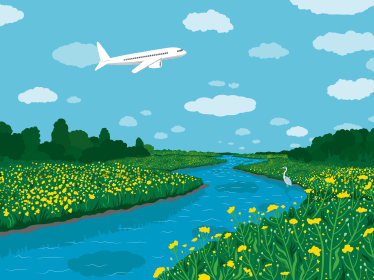Changing climate, changing river

We're experiencing more extreme weather events, floods and droughts — all of which directly impact the Mississippi River and the communities that rely on it.
What does our changing climate mean for the Mississippi River? And how is FMR working to curb emissions and create a more resilient river?
What climate change looks like in Minnesota
At current emission trends, most modeling predicts these changes for Minnesota:
- Hotter average temperatures across the state, including warmer winters (Did you know Minneapolis is the second fastest-warming city in the country? And by 2080, the Twin Cities might feel more like Lansing, Kansas in terms of average temperatures and precipitation.)
- More frequent, more intense rain and storm events leading to more flash flooding
- More frequent late-summer drought
- Shifting ecosystems: woodlands will migrate north and east as our now-western prairie replaces former forests
Those basic changing trends translate to some major impacts on the Mississippi River, its surrounding natural lands and communities in Minnesota. Here's what we're focused on:
Stemming runoff pollution from farmland ...
Intense rain events and flooding wash even more of what's on our land into our waters. In fact, scientists expect nitrate runoff pollution in the upper Mississippi River basin to increase by about 24% during the 21st century.
That means we can't protect the river (or our lakes or drinking water) unless we stem the flow of fertilizer. And we can't do that without addressing its chief source: our agricultural system.
FMR is a key leader in a growing movement to support the integration of new, innovative clean-water crops that can cover our soil and hold it (and fertilizer) in place. These crops and systems will be key to protecting our drinking water, ensuring healthy ecosystems and reducing the Gulf of Mexico dead zone downstream.
That's why we advocate for state investment in the Forever Green Initiative and next-generation clean-water crops that have the power to reduce runoff pollution by as much as 90% while boosting farmers' bottom lines.
... and from the Twin Cities
Since urban runoff contributes to river pollution too, our volunteers mark storm drains with the reminder to "Keep 'em clean, drains to river." You can stencil storm drains on your own in St. Paul with our DIY stenciling kit.
At dozens of FMR restoration sites, volunteers put long-rooted native plants in the ground to help the land filter pollution and absorb more water, keeping washouts and erosion at bay. In addition to protecting our waters during major runoff events, more plants and longer roots — whether in forests, farm fields, parks or backyards — also sequester more carbon, fighting the cause of climate change as well as its impacts.
Mitigating flooding here and downstream
Creating a resilient landscape will help us mitigate flooding in Minnesota and downstream. FMR is a leader in the effort to pass the federal Mississippi River Restoration & Resilience Initiative that would provide substantial funding for natural infrastructure and flood protection in Mississippi River communities.
The proposed initiative would prioritize investments in communities of color and economically disadvantaged rural and urban communities, both to ensure that economic benefits are equitable and to prevent the worst impacts of climate-driven flood events.
Supporting migration through habitat corridors
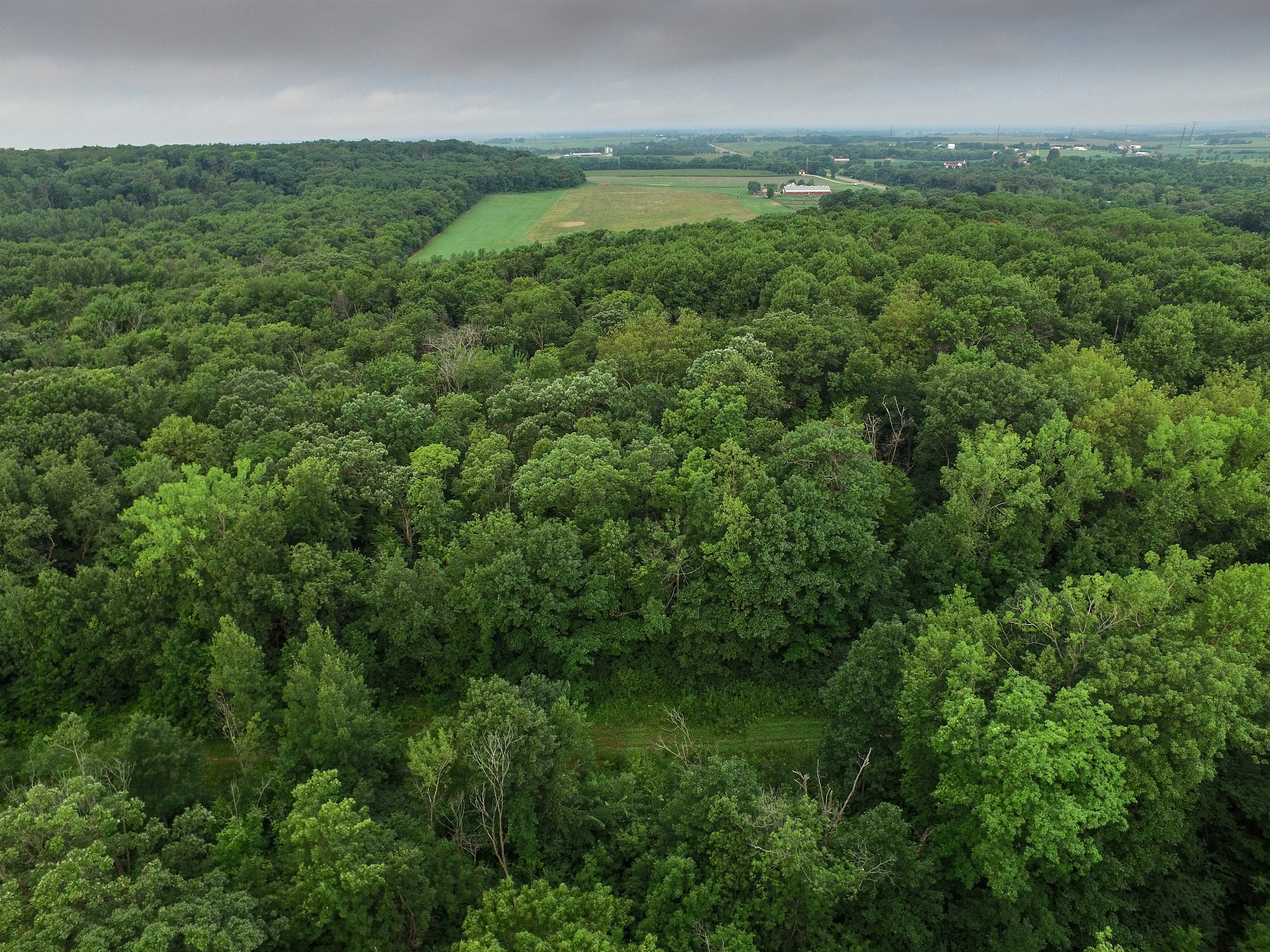
Connected habitat along the river corridor will be crucial for climate-forced migrators. (Photo by Tom Reiter)
Within 50 years, climatic conditions for the western third of our state's prairie will expand north and east.
As wildlife attempt to follow their vanishing habitat, biologists have identified river corridors as particularly important for their migration and survival.
Since our founding, FMR has partnered with many agencies and organizations to preserve as much riverine habitat as possible, aiming to create corridors for wildlife. So far we've protected over 1,000 acres and are restoring over 2,000.
Yet climate change creates an urgency to try to connect habitat wherever we can.
Diversifying habitat for resilience
As plants and animals that contribute to healthy ecosystems migrate, so will those that degrade habitat.
Flooding aids invasive carp and other aquatic invasive species in jumping watersheds. Fewer periods of deep freezes allow insects like the emerald ash borer to survive through winter at higher rates than in the past. And in response to climatic changes, our habitats will shift, leaving openings for more invasive plants to find a toehold and spread.
But our ecological restoration can help counter these possibilities. "As we restore a diverse community, it becomes more self-sustaining and needs less effort on our part to continue to thrive," says FMR Conservation Director Alex Roth.
Plus, if one species wanes under increasing temperatures or other climatic stress, its neighbors might fill in the gap it leaves behind. The mix of plant species in a diverse community decreases its chances of collapse.
We're also planting trees that are predicted to grow successfully in a warmer Minnesotan climate. Because of this, our restorations will make ecosystems more resilient.
Supporting wildlife through habitats great and small
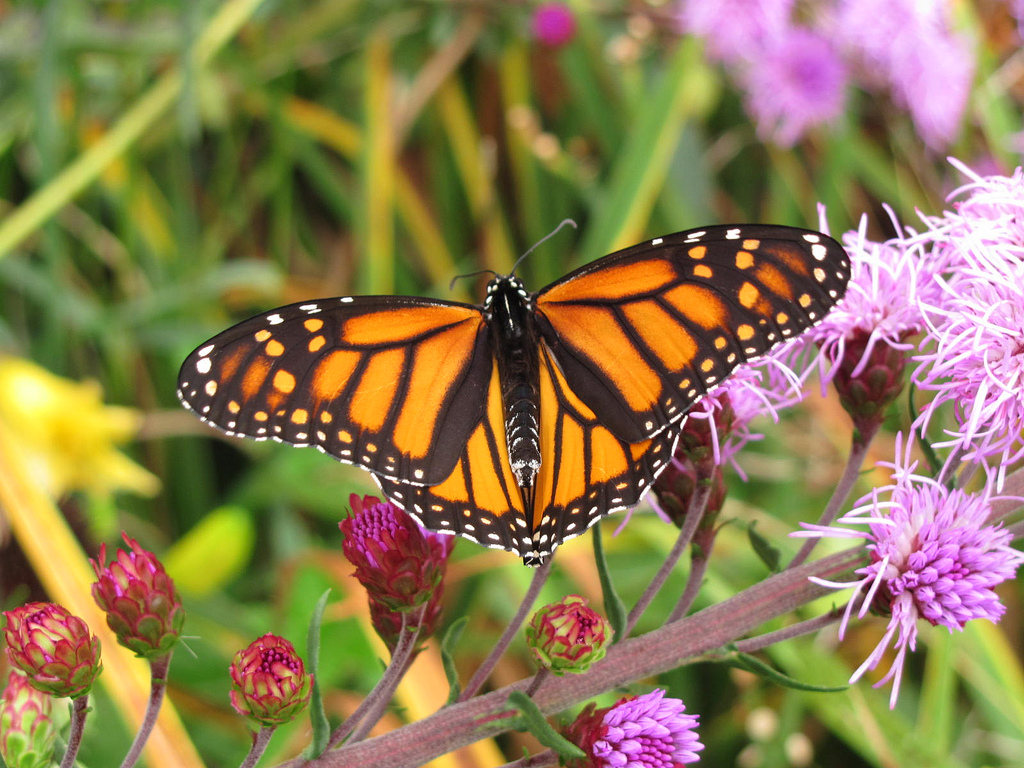
Monarchs and other pollinators need nectar-rich native wildflowers like this blazing star for energy.
Erratic weather and unpredictable seasonal changes can create timing mismatches for species that depend on each other.
Pollinators, for example, may emerge hungry in spring only to find fewer nectar sources in bloom than usual. This heightens the need for habitat — both large-scale and small.
With dozens of habitat restoration sites across the metro region, FMR strives to grow a diverse mix of plants on thousands of acres of prairie, woodland and wetland. But even a small backyard garden of native blooms can help butterflies, bees and other pollinators survive. Learn more about turning your yard into river- and wildlife-friendly habitat.
Keeping climate and community in mind for all riverfront development
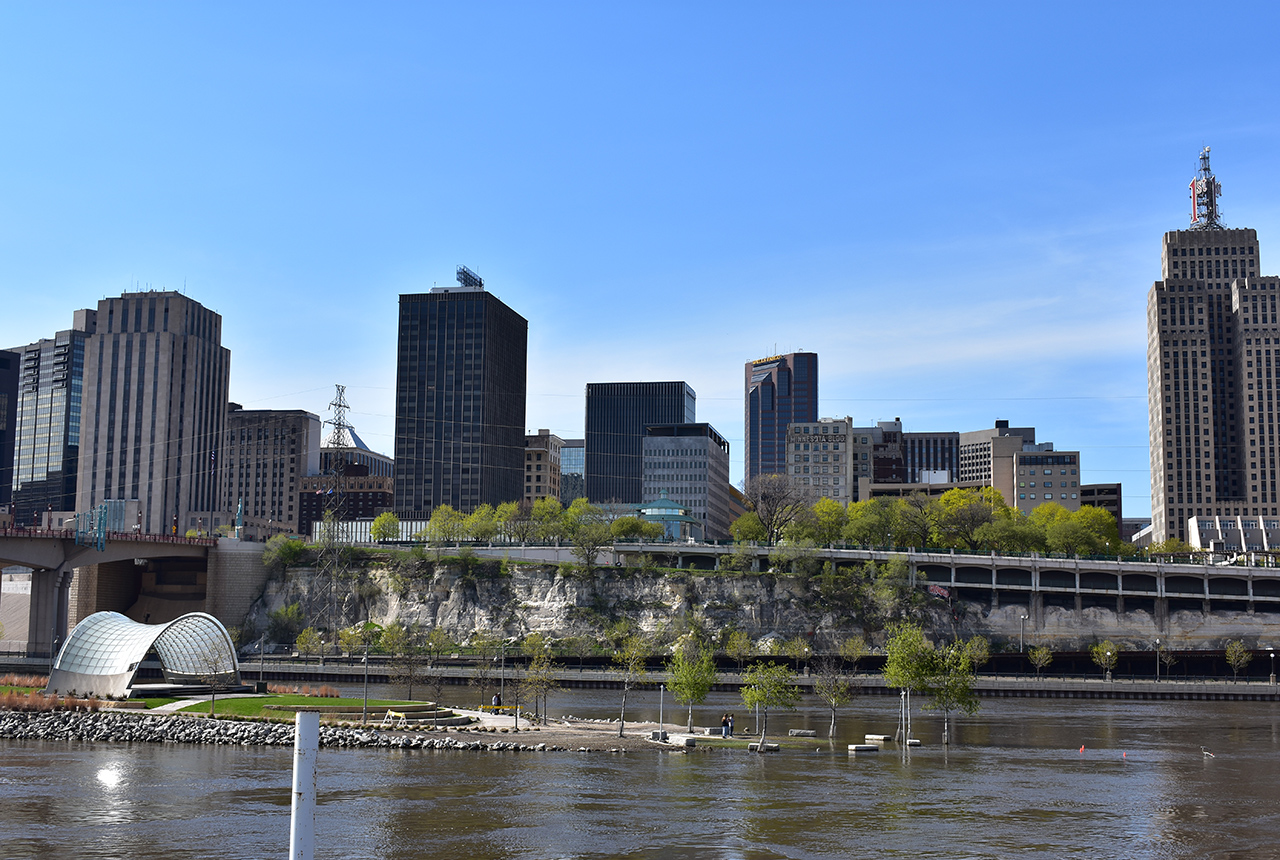
Parks and developments will need to consider flooding, runoff and erosion even more seriously.
When it comes to riverfront development and increasing rains, says FMR Land Use & Planning Program Director Colleen O'Connor Toberman, "Our planning standards around stormwater and erosion need to evolve, particularly in sensitive areas along the river."
Luckily we're able to hang our hat on the improved Mississippi River Corridor Critical Area rules that FMR helped create. But a booming real estate market will test the strengths of these standards and the resolve of local elected officials to stand behind them.
We expect to increasingly weigh in on metro development proposals — especially those seeking variances from the new river rules — with an eye to erosion control, landslide prevention and stormwater management.
We're also weighing in on plans to shape our riverfront for access and park spaces. Because of the urban heat island effect, temps will rise even higher in urban areas, as will stress levels. Parks and green spaces help with both(link is external), not to mention air quality, runoff pollution reduction and wildlife habitat.
This is particularly important in areas with less green space, often home to more people with lower incomes and people of color. In the Twin Cities, people of color and low-income communities are subjected to disproportionately higher levels of pollutants than other Twin Cities residents.
That's partly because neighborhoods with more low-income residents and/or residents of color have much less park space. Park space is essential for clean air and also for avoiding heat risks. One study found that Minneapolis neighborhoods that were historically redlined are an average of 11 degrees hotter than those that were not. Heat is a proven killer, especially for people with chronic medical conditions.
Restoring green space, especially in these neighborhoods, is an environmental justice concern as the climate warms. The restoration efforts our students and volunteers support across the metro can help reverse this trend.
Seeds of change
Our Stewardship & Education program encourages people to become stewards and caretakers for this place we call home, planting the seeds for climate change efforts through each event and partnership.
Whether we're tending one of our restoration sites or stenciling storm drains on the streets of St. Paul, volunteers and students learn about the river, restoration practices and the history of their parks and green spaces.
Our education and volunteer programs also directly teach people about climate change, actively involving them in solutions like restoring areas in the city that provide respite for people and critters alike.
More climate change resources
- Climate Cast — An MPR News series on our changing climate
- Climate change threatens our forests — An article showing likely habitat shifts across Minnesota (Star Tribune)
- What will climate change feel like in 50 years? An app that compares a current city to the city with its future similar climate (University of Maryland)
- Minnesota climate trends — An interactive map of climate data by watershed and more (MN DNR)
- Climate change in Minnesota — Minnesota Pollution Control Agency's info on climate change effects, mitigation and adaptation and its disproportionate impacts (MPCA)
- FMR's climate change updates — A roundup of our articles that address climate change and our river
Become a River Guardian
Sign up and we'll email you when important river issues arise. We make it quick and easy to contact decision-makers. River Guardians are also invited to special social hours and other events about legislative and metro river corridor issues.
